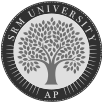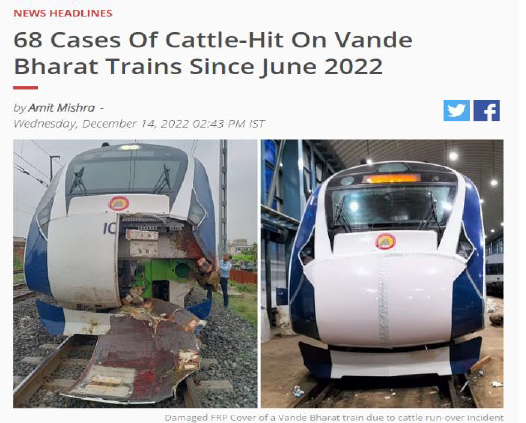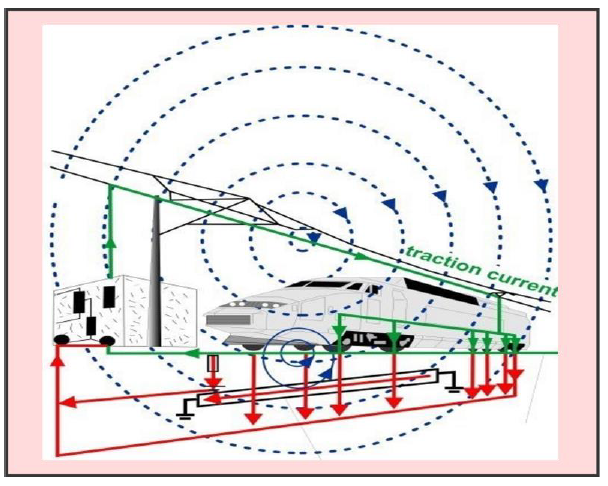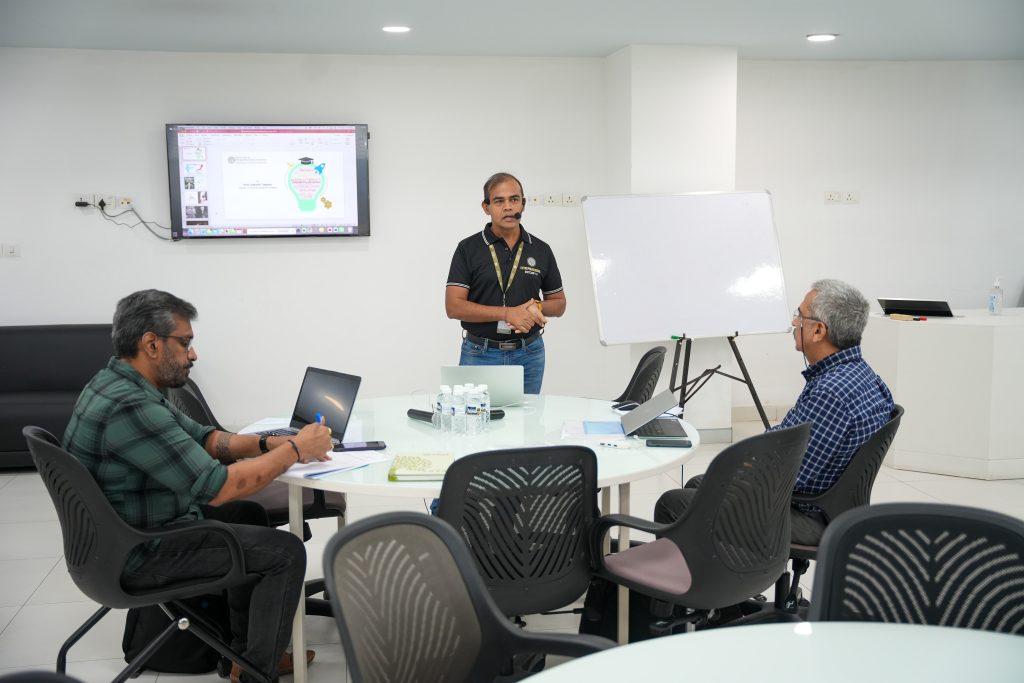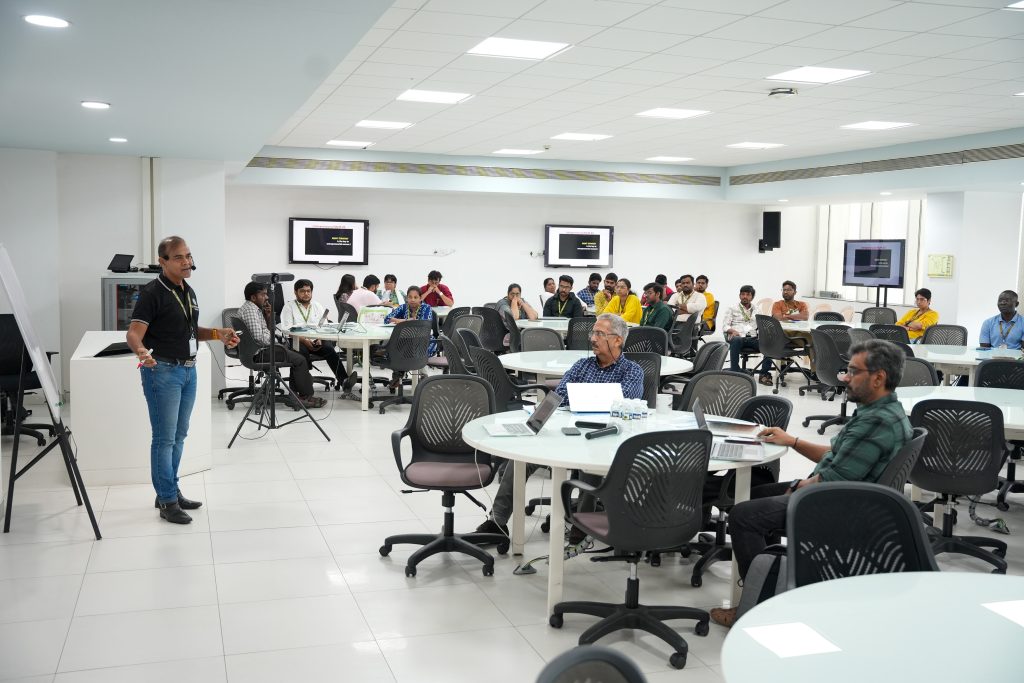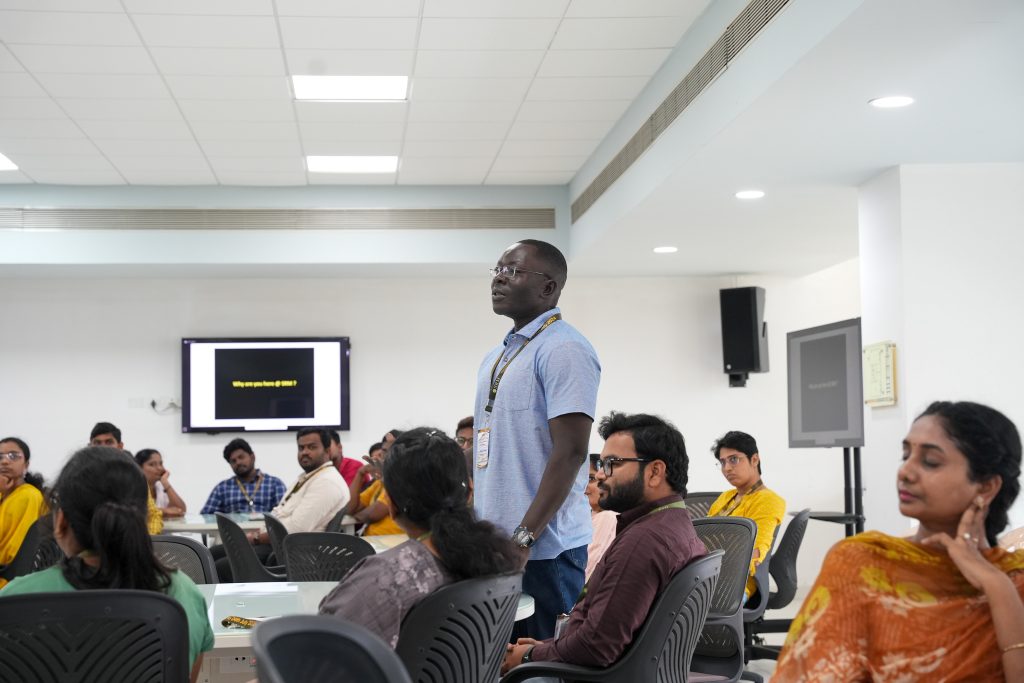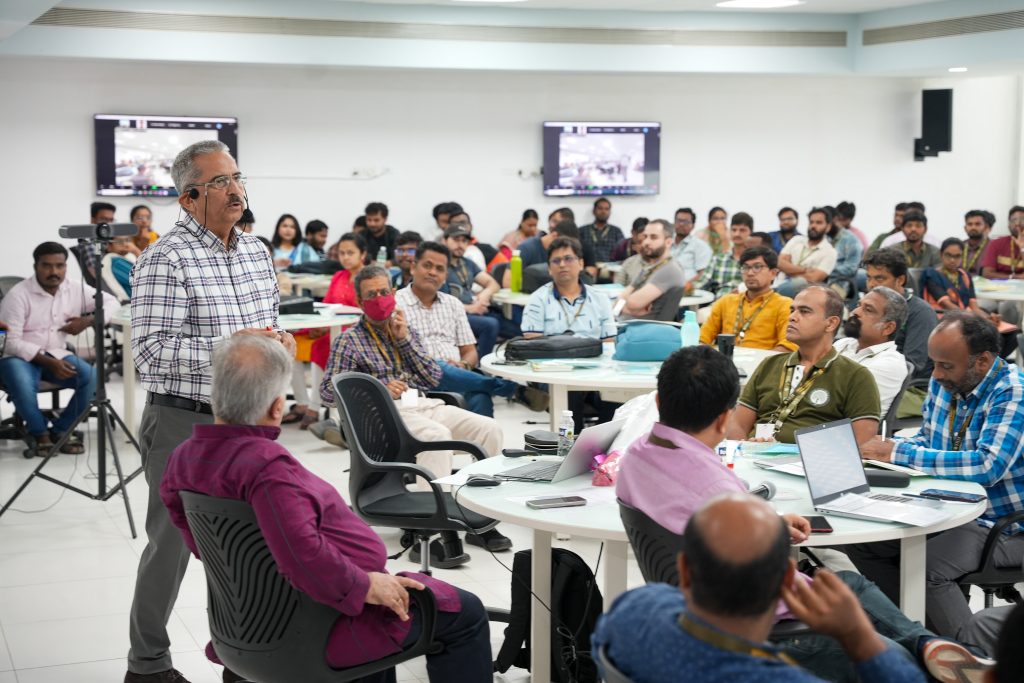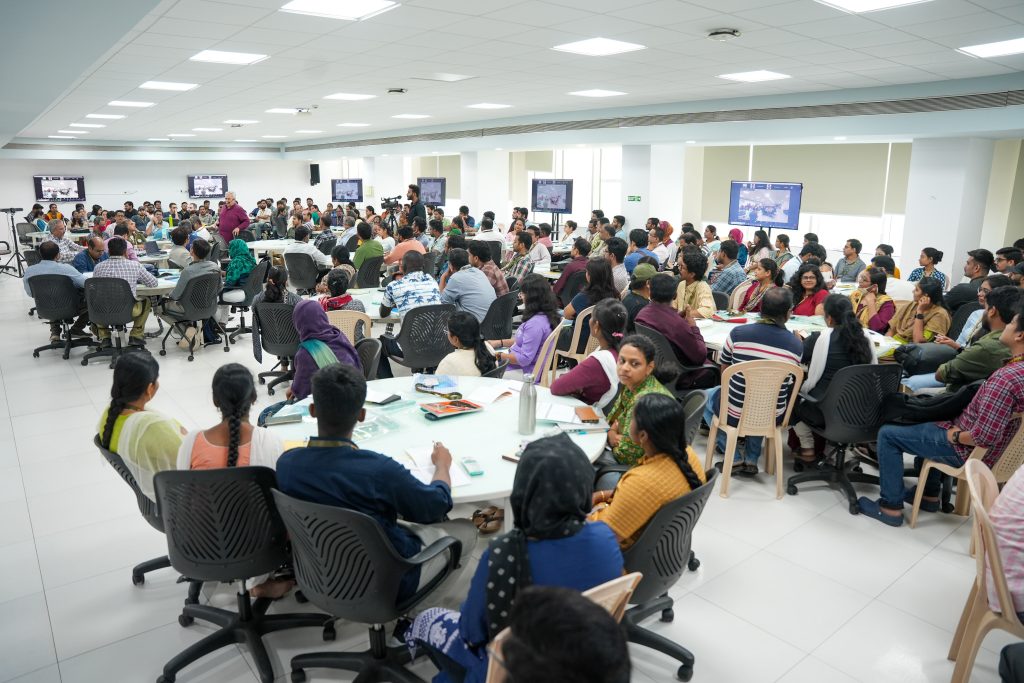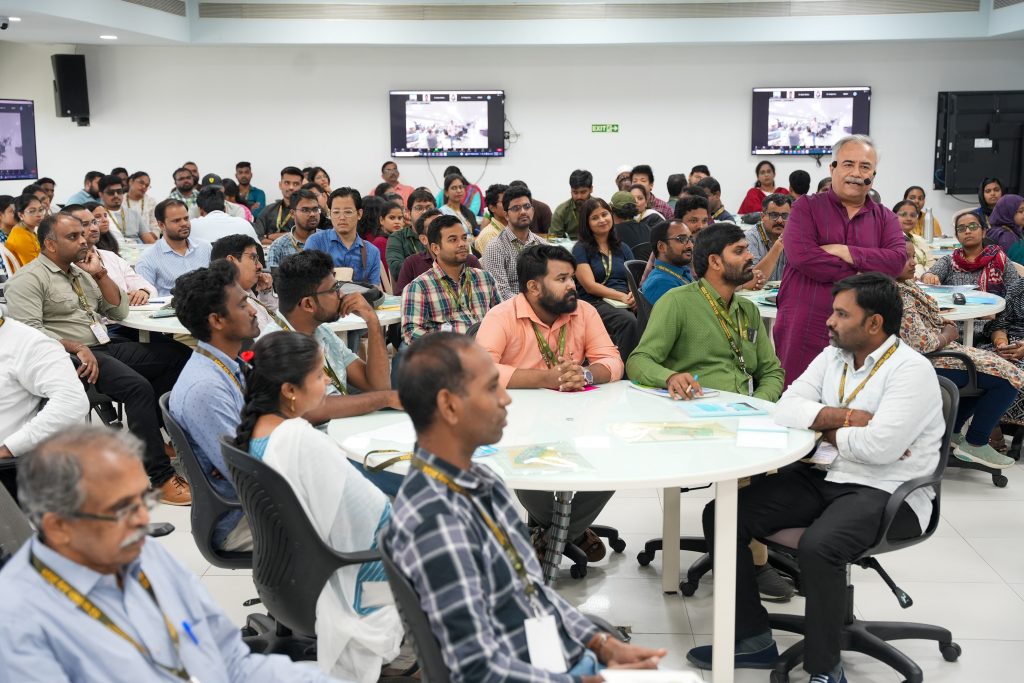Dr Dwivedy and Dr Nagasai Upgrade CMT Technology
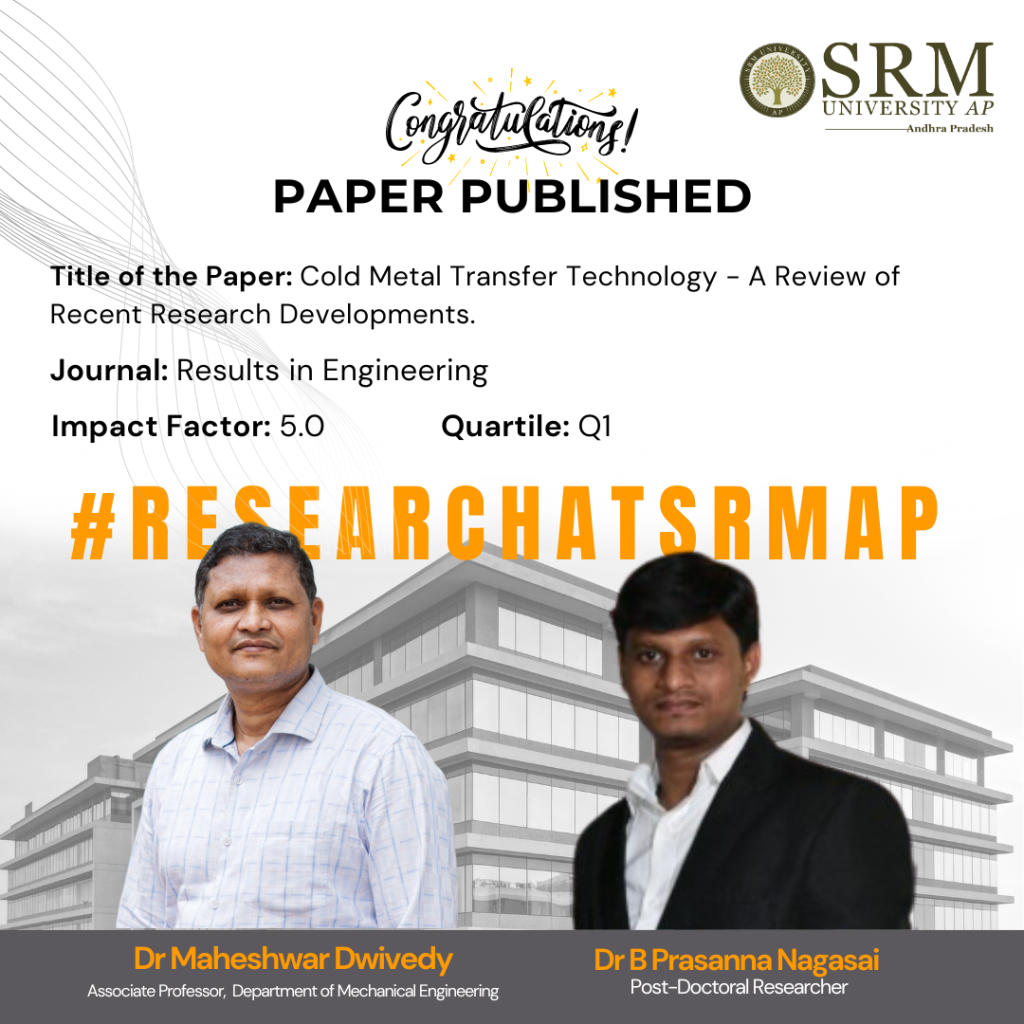
Dr Maheshwar Dwivedy, Associate Dean of Practice School, and Associate Professor, at the Department of Mechanical Engineering, SRM University-AP in collaboration with his post-doctoral scholar, Dr B Prasanna Nagasai, have joined forces to combine artificial intelligence with Cold Metal Transfer (CMT) Technology. Their research paper, “Cold Metal Transfer Technology – A Review of Recent Research Developments,” featured in the Q1 journal, Results in Engineering promises to make a significant impact on automobile, aerospace, oil and gas manufacturing industries, and that’s not all the research will also generate employment opportunities, and empower engineers to deliver enhanced services.
Abstract:
Cold Metal Transfer (CMT) technology has emerged as a promising welding technique, offering numerous advantages such as reduced heat input, minimal spatter, and enhanced control over the welding process. This paper provides a comprehensive review of recent research developments in CMT technology, focusing on its history, variants, recent advancements, and future perspectives. Initially, the paper traces the historical development of CMT welding, highlighting its evolution and the introduction of various CMT variants with distinct characteristics and applications. Recent studies have focused on optimising CMT process parameters to improve weld quality and productivity, leading to advancements in parameter control, arc stability, and wire-feeding mechanisms. Additionally, research has explored the microstructural evolution and mechanical properties of CMT-welded joints for both similar and dissimilar metals, providing insights into material compatibility, joint design, and performance under various conditions. Specific applications such as Laser-CMT hybrid welding, CMT cladding, CMT wire arc additive manufacturing, and CMT welding for repair across various materials are examined, demonstrating the versatility of CMT technology. This review also addresses the challenges and methodologies for defect reduction in CMT welding, along with recommendations for best practices. Furthermore, the paper discusses the integration of artificial intelligence in CMT welding, exploring opportunities for enhanced weld quality, economic, and social implications, and future research directions.
Practical and Social Implications:
The practical implementation of this research on Cold Metal Transfer (CMT) technology can significantly impact various industries, such as automotive, aerospace, oil and gas, and manufacturing. By optimising CMT welding parameters and integrating advanced features like arc length control and waveform modulation, industries can achieve higher weld quality, reduce defects, and enhance productivity. This can lead to more reliable and efficient manufacturing processes, resulting in cost savings and improved product performance. Social implications associated with this research include the potential for increased job opportunities and skill development in the welding and manufacturing sectors. As industries adopt advanced CMT technology, there will be a growing demand for skilled workers trained in these techniques. Additionally, improved welding quality and reduced defects can lead to safer and more durable products, enhancing overall public safety and satisfaction. The integration of artificial intelligence in CMT welding also opens up new avenues for innovation and technological advancements, fostering a culture of continuous improvement and progress in the manufacturing industry.
Collaborations:
Dr V Balasubramanian,
Professor & Director,
Centre for Materials Joining & Research (CEMAJOR)
Annamalai University, Annamalai Nagar-608002, Tamilnadu.
Dr P Snehalatha,
Associate Professor & Head
Department of Mechanical Engineering,
Sri Padmavathi Mahila Visvavidyalam, Tirupati, Andhra Pradesh-517502, India.
Future Research Plans:
The upcoming work will concentrate on creating Functionally Graded Materials (FGMs) through Wire-Arc Additive Manufacturing (WAAM) by merging nickel and stainless steel. The goal of this research is to leverage the distinct properties of each metal to develop components suited for specialised high-performance applications. The primary challenges involve optimizing the interfaces between materials, refining the deposition processes, and ensuring strong structural integrity throughout the manufacturing process.
The link to the article: https://doi.org/10.1016/j.rineng.2024.102423
- Published in Departmental News, Mechanical Engineering NEWS, News, Research News
Revolutionising Cattle Safety

The Department of Electrical and Communication Engineering at SRM University-AP is delighted to announce the publication of a patent by its faculty, including Associate Professor Dr Pradyut Kumar Sanki and Assistant Professor Dr Swagata Samanta, along with research scholars Ravisankar Dakupati, Syed Ali Hussain, and P N S B S V Prasad V. The patent, titled “Method and Apparatus for Safeguarding Livestock Near Railway Tracks using Non-Lethal Deterrent Technology,” has introduced a groundbreaking solution that helps prevent accidents of wandering cattle. This innovative technology promises to protect livestock and minimise economic losses for cattle owners while championing the advancement of technology in countries like India.
Abstract:
Nowadays we have been hearing that Vandebharat express train hits cow, causing damage to both railways and cattle owners. We need to find a solution to this problem. These issues shouldn’t be hurdle for the growth of technology for developing countries like india. The technology we are going to use is a belt is worn by a cow. When the cow tries to cross near railway track it receives a Non-Lethal shock, makes the cow to scare and move back. All this circuit is operated with 7.4V DC
Practical implementation:
The practical implementation of the Anti-Track Cattle Band involves equipping cows with the device to prevent accidents near railway tracks. By detecting magnetic fields and delivering non-lethal shocks, the device ensures the safety of both the cattle and the railway infrastructure. This implementation can significantly reduce the risk of collisions and protect valuable livestock.
From a social perspective, the invention has several implications. It addresses the safety concerns of both animals and humans by preventing accidents and minimizing potential harm. By safeguarding livestock near railway tracks, the technology contributes to animal welfare and reduces economic losses for cattle owners. Additionally, the device promotes a more humane and proactive approach to mitigating risks associated with animal-human interactions in railway environments.
Collaborations:
The research on the Anti-Track Cattle Band involved collaboration among a team of inventors with diverse expertise:
Ravisankar Dakupati – Research Scholar at SRM University-AP
Salvendar Kovelakar – Software Engineer at DXC Technology, Bangalore
Syed Ali Hussain – Research Scholar at SRM University-AP
P N S B S V Prasad V – Research Scholar at SRM University-AP
Dr Pradyut Kumar Sanki – Associate Professor at SRM University-AP
Dr Swagata Samanta – Assistant Professor at SRM University-AP
This collaborative effort brought together individuals with backgrounds in research, software engineering, and academia to develop and implement the innovative Anti-Track Cattle Band technology.
Future Research Plans:
In future research for patent publication regarding “Apparatus and Method for Railway Livestock Protection,” the focus will likely be on enhancing sensor technology to detect animals more accurately over longer distances and in various conditions. This could involve integrating artificial intelligence and machine learning for improved detection and reducing false alarms. Additionally, there may be efforts to develop systems for remote monitoring and control, enabling real-time adjustments from a central location. Adaptability to different environments, collaboration for standardized protocols, cost-effectiveness, and assessing environmental impacts will also be key areas of interest. Overall, future research aims to create more effective, efficient, and sustainable solutions for protecting livestock around railway tracks
- Published in Departmental News, ECE NEWS, News, Research News
A Breakthrough Patent for the Automated Abnormality Detection System
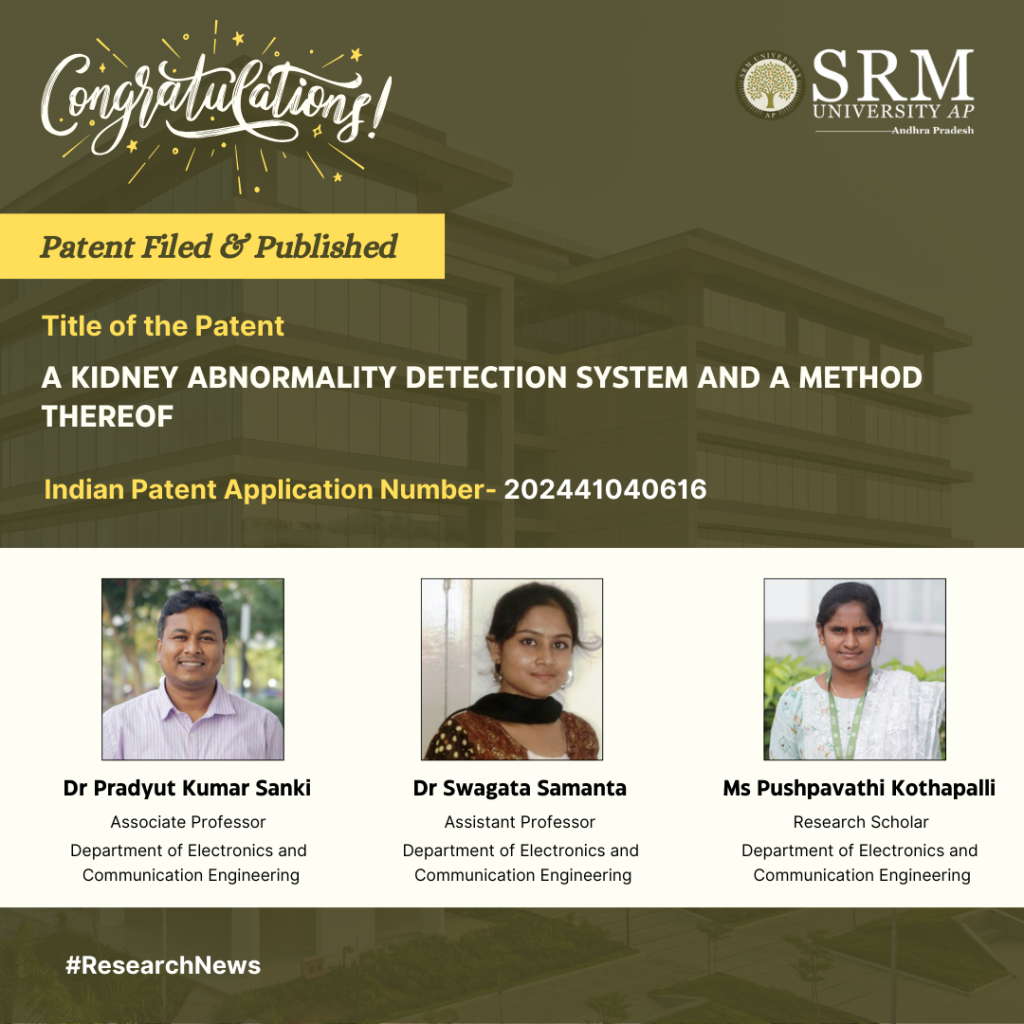
Dr Pradyut Kumar Sanki, Dr Swagata Samanta, and research scholar Ms Pushpavathi Kothapalli from the Department of Electronics and Communication Engineering published their patent titled “A Kidney Abnormality Detection System And a Method Thereof,” with Application No. 202441040616. This innovative method, which utilises advanced deep learning techniques, promises to revolutionise the accuracy and efficiency of kidney disease diagnosis. With the potential for widespread clinical adoption, this technology aims to enhance patient care, offering a brighter future for kidney disease detection and treatment.
Abstract:
This research work aimed to develop a method for detecting kidney diseases, including kidney stones, cysts, and tumors. The method achieved high accuracy in detecting kidney diseases, with a good mean average precision, precision, and recall. The study used techniques to select the most relevant features for kidney disease detection, identifying top features related to blood tests and patient health. The method outperformed other approaches in terms of accuracy, precision, and recall. The study used a comprehensive dataset of kidney disease patients to train and test the method. The results suggest that the method has the potential to be widely adopted in clinical settings, contributing to more accurate and efficient diagnostic tools for kidney disease detection and improving patient care.
Practical implementation:
The practical implementation of our research involves deploying a system for real-time detection and classification of kidney disease, including kidney stones, cysts, and tumors. The method achieved high accuracy in detecting kidney diseases using the Deep learning technique. Our model can quickly identify the disease of the kidney. The study used techniques to select the most relevant features for kidney disease detection, identifying top features related to blood tests and patient health. The method outperformed other approaches in terms of accuracy, precision, and recall. The study used a comprehensive dataset of kidney disease patients to train and test the method. The results suggest that the method has the potential to be widely adopted in clinical settings, contributing to more accurate and efficient diagnostic tools for kidney disease detection and improving patient care.
Future Research Plans:
The future plans for the work on chronic kidney disease (CKD) detection and management involve several key areas:
1. Improved Screening and Diagnosis: Update the United States Preventive Services Task Force (USPSTF) recommendation for CKD screening to reflect current evidence supporting routine screening for high-risk asymptomatic adults.
2. Enhanced Patient Engagement and Person-Centered Care: Advance education of primary care clinicians about CKD risk factors, testing, detection, and interventions that are graded and proportional to the eGFR and uACR risk stratification or heat map.
3. Advancements in Nephrology: Develop novel therapeutic strategies, such as wearable artificial kidneys, xenotransplantation, stem cell-derived therapies, and bioengineered and bio-artificial kidneys, to improve renal replacement therapies and address the shortage of kidney donors.
4. Machine Learning and Predictive Modelling: Continue to evaluate and improve machine learning approaches for early CKD diagnoses, focusing on reducing the number of input features and enhancing the accuracy of prediction models.
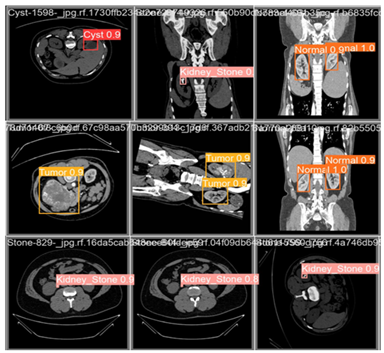
- Published in Departmental News, ECE NEWS, News, Research News
Dr Basu Pens a Book on Life’s Boulevard
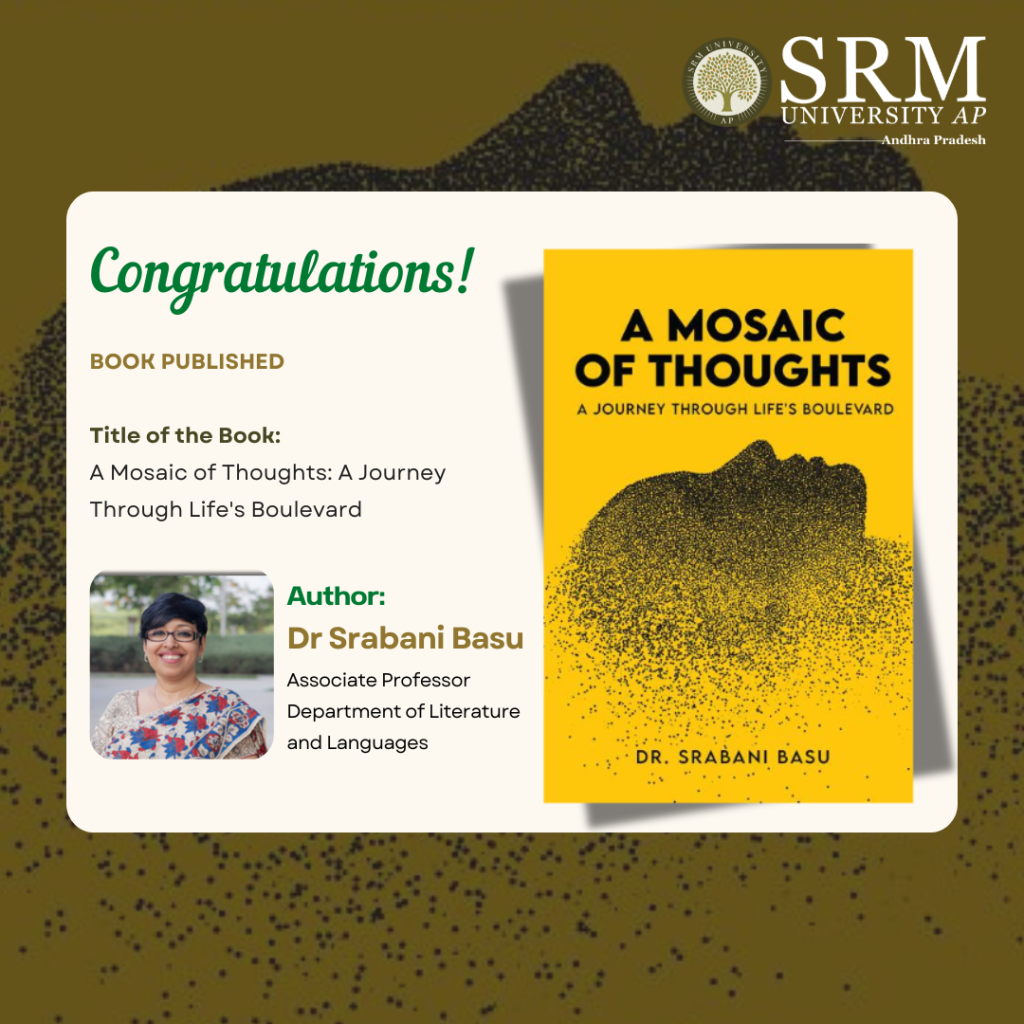 In the esteemed corridors of academia, where the pursuit of knowledge intertwines with the art of mentorship, Dr Srabani Basu emerges as a figure of inspiration and innovation. Nestled within the vibrant community of SRM University-AP. Dr Basu is not just an Associate Professor in the Department of Literature and Languages, but a beacon of intellectual and administrative prowess. Her recent publication, A Mosaic of Thoughts: A Journey Through Life’s Boulevard, is a book of 12 insightful articles that recount interesting snippets of life and experiences both in Academia and Corporate.
In the esteemed corridors of academia, where the pursuit of knowledge intertwines with the art of mentorship, Dr Srabani Basu emerges as a figure of inspiration and innovation. Nestled within the vibrant community of SRM University-AP. Dr Basu is not just an Associate Professor in the Department of Literature and Languages, but a beacon of intellectual and administrative prowess. Her recent publication, A Mosaic of Thoughts: A Journey Through Life’s Boulevard, is a book of 12 insightful articles that recount interesting snippets of life and experiences both in Academia and Corporate.
Abstract:
Dive into “Mosaic of Thought,” a captivating collection of 12 insightful articles exploring the intricacies of contemporary life. This book challenges conventional thinking with themes such as “Are We Manufacturing Countless Bricks in the Wall?” questioning conformity in education and society, and “Of Apes, Leaders, and Organisations,” delving into the primal roots of leadership. Navigate learning complexities in “Is Your Map Meeting Your Learner’s Map?” and confront harassment in “Bullies of All Colours.” Discover the culture of blame in “Blame is the Name of the Game,” and re-imagine cartoons with “Re-discovering Tom and Jerry Through a Quantum Lens.” Each article offers unique perspectives, from fleeting moments in “The Irreplaceable Moments Explored” to impactful first impressions in “Of Halos and Horns.” With humour and seriousness, “A Comedy of Ctrl C and Ctrl V” critiques digital originality, while “Echoes of Influence: A Caveat” warns of the impact of words. This collection is a thought-provoking mosaic for understanding the multifaceted canvas of life.
About the Author:
Dr Srabani Basu, with a distinguished career spanning over 29 years, is an accomplished academic and corporate trainer. Currently serving as an Associate Professor in the Department of Literature & Languages at SRM University, A.P., she has an extensive background in education and training. Dr Basu earned her PhD in English from IKSVV (India’s first Music & Fine Arts University) in Chhattisgarh, India, in 2003. She also holds a PGDBM in Public Relations from Bhavan’s College of Communication & Management, Kolkata, and an MS in Psychoanalysis from IPMS, Mumbai, with a specialization in Students’ Psychology.
Dr Basu has held significant roles as a senior corporate trainer, master coach, content developer, and organisation development specialist. Her experience includes training across diverse industries such as media, banking, telecom, IT, ITES, engineering, FMCG, manufacturing, and education. Her expertise lies in delivering life – skills solutions and providing qualitative improvements. With a profound understanding of human psychology, Dr Basu excels in creating engaging and effective training and classroom sessions that empower participants and students in fostering individual creativity.
In addition to her academic and training roles, Dr Basu is a certified Career Transition Coach, a Neuro-Linguistic Programming (NLP) Master Practitioner, and a Gestalt Master Practitioner. She adeptly customizes her content to match the experience level and knowledge of her target audience and often integrates insights from multiple disciplines to provide holistic learning for the learners. She strongly believes that “Our ambition should be to rule ourselves, the true kingdom for each one of us; and true progress is to know more, and be more, and to do more.”
We wish her all the best for her book and hope for many more to come.
For more details:
https://notionpress.com/read/a-mosaic-of-thoughts?book=published&utm_source=share_publish_email&utm_medium=email
- Published in Departmental News, English news, News, Research News
Research to Revenue: 3-day Workshop Concludes
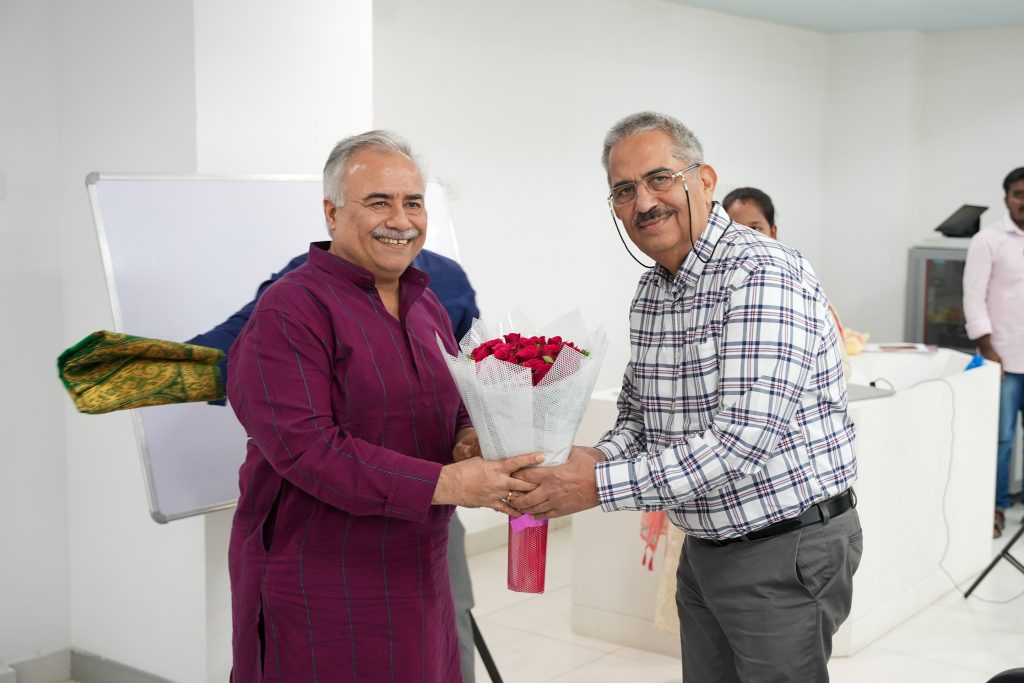 The Office of the Dean-Research and IPR Cell at SRM University-AP hosted a highly impactful 3-day Workshop on “Research Commercialisation.” The workshop was graced by industry expert Mr Rakesh Sharma, a leading figure in business restructuring and global marketing. Mr Sharma with his notable experience of 38 years at Philips, imparted valuable insights on innovation, venture development, and commercialisation.
The Office of the Dean-Research and IPR Cell at SRM University-AP hosted a highly impactful 3-day Workshop on “Research Commercialisation.” The workshop was graced by industry expert Mr Rakesh Sharma, a leading figure in business restructuring and global marketing. Mr Sharma with his notable experience of 38 years at Philips, imparted valuable insights on innovation, venture development, and commercialisation.
The workshop was attended by faculty and research scholars, all keen on understanding the intricacies of research commercialisation. The inaugural ceremony of the workshop was highlighted by the felicitation of Mr Sharma by the Vice Chancellor, Prof. Manoj K Arora, along with Prof. Ranjit Thapa, Dean—Research; Deans of the three schools; Prof. G S Vinodkumar, Coordinator—IPR Cell & Convenor of this workshop; and other senior faculty members.
In his address, Prof. Manoj K Arora underscored the critical role of research, he urged the attendees to “think differently and change your mindset to unlock the boundless potential of your research and innovation.” He engaged with faculty and research scholars, seeking their perspectives. Prof. Ranjith Thapa, the Dean of Research, presented an overview of the varsity’s research capabilities, spotlighting its achievements in Q1 publications and patents across different departments.
Day 1– The workshop kicked off with Mr Sharma encouraging participants to voice their queries and concerns about commercialisation. Key discussion points covered included linking university research with practical applications, the transformation of patents and research into industry-ready products, understanding market needs, fundraising for research projects, and leveraging humanities and liberal arts in patent implementation. Mr Sharma engaged with each of the queries and closely explained to the students with simple and easy-to-understand examples, thereby making the session worthwhile and interesting.
Day 2—Scholars had the opportunity to present their published and granted patents. They received constructive feedback from faculty and Mr Sharma and understood how these patents could be further developed for commercialisation, thereby leading to fruitful discussions on improving and materialising these ideas.
Day 3– A significant outcome of the workshop was the proposal to establish a new centre for research commercialisation designed to offer students an in-house pathway to commercialise their patents. This initiative received widespread acclaim from all participants and sparked engaging discussions about transforming research into viable business ventures, facilitated by the session by the Director of Entrepreneurship and Innovation, Mr Sidharth Shankar Tripathy.
The workshop offered a crucial platform for students, offering both inspiration and guidance in their pursuit of entrepreneurship. The event was specifically designed for all PhD Scholars who are currently working on their research papers and looking for ways to commercialise their innovative ideas, projects, or inventions.
Through a series of expert-led sessions, interactive discussions, and networking opportunities, students were encouraged to think critically about their project’s potential impact, market readiness, and the pathways to achieving sustainable business growth.
- Published in News, Research, Research News, Research Workshop, Workshop
SRM AP Vice Chancellor Nominated to Prestigious AIU Governing Council
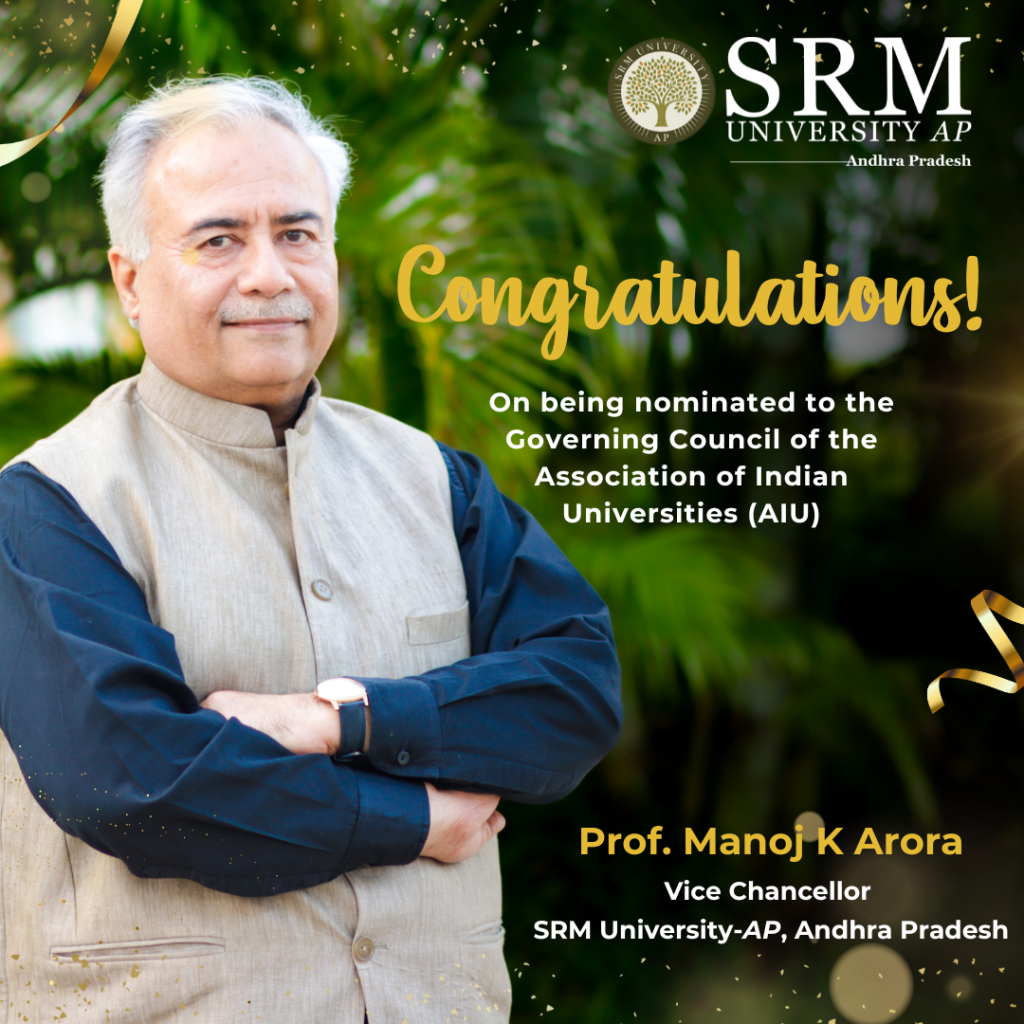 A proud moment for SRM University-AP as it announces the nomination of its esteemed Vice Chancellor, Prof. Manoj K Arora, to the Governing Council of the Association of Indian Universities (AIU). The Association of Indian Universities (AIU) serves as a paramount inter-university organisation actively involved in the advancement and nurturing of higher education.
A proud moment for SRM University-AP as it announces the nomination of its esteemed Vice Chancellor, Prof. Manoj K Arora, to the Governing Council of the Association of Indian Universities (AIU). The Association of Indian Universities (AIU) serves as a paramount inter-university organisation actively involved in the advancement and nurturing of higher education.
On accepting this nomination, Prof. Arora remarked, “I am deeply humbled to have been nominated as a member of AIU and look forward to it. This nomination reflects our collective efforts towards advancing higher education and fostering collaboration, thereby working towards changing the face of higher education in India.”
This notable appointment not only recognises Prof. Arora’s outstanding contributions to the academic fraternity but also underscores SRM University-AP‘s commitment to excellence in higher education. The AIU plays a pivotal role in elevating the quality and accessibility of higher education across the nation. The AIU, with its broad membership including international institutions from Bangladesh, Bhutan, Kazakhstan, Malaysia, Mauritius, Nepal, Thailand, the UAE, and the UK, serves as a platform for global educational exchange and development. Its endeavours are directed toward creating a collaborative and innovative educational landscape, making this nomination significant for SRM University-AP and the broader academic community.
Prof. Arora’s nomination is a moment of pride not only for him but for the entire SRM AP fraternity. The university community extends its heartfelt congratulations to Prof. Arora on this noteworthy achievement and eagerly anticipates his ongoing guidance and foresight in steering the course of education in India.
International Yoga Day Observance: A Reflection of Tradition and Modern Wellness
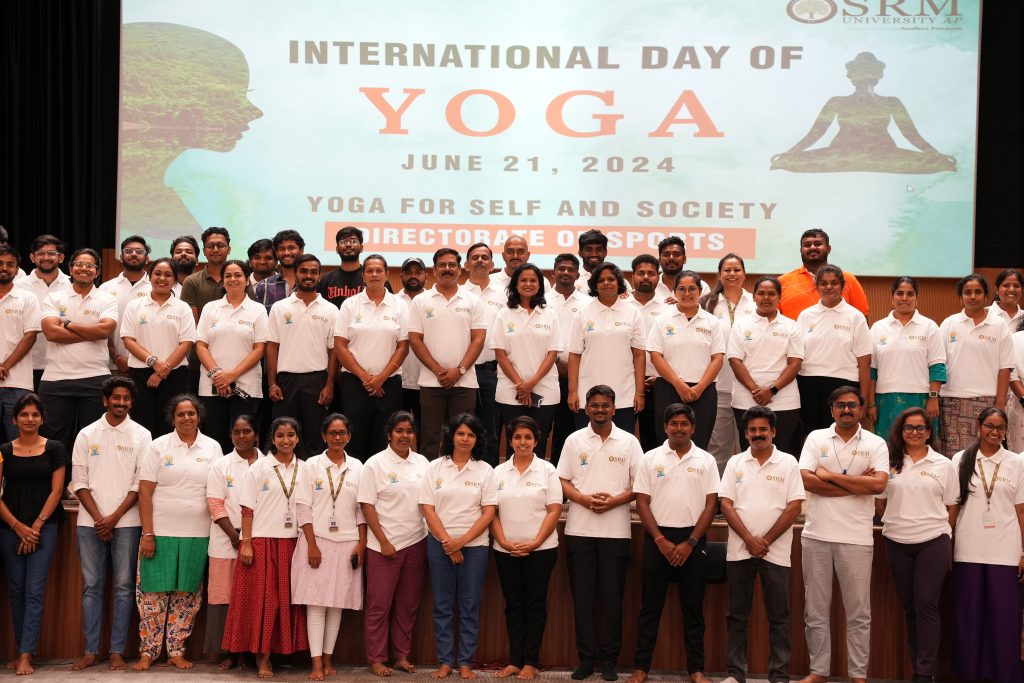
On June 21, SRM University-AP marked International Yoga Day with commendable enthusiasm, drawing the active participation of faculty, students, and staff. This significant event, organised under the auspices of the Directorate of Student Affairs and the Directorate of Sports, not only highlighted the importance of yoga in contemporary life but also emphasised the unifying power of this ancient practice.
The ceremony commenced with a warm welcome address by Mr Anil Kumar Nigam, Director of Student Affairs, setting a positive tone for the day. Mr Nigam further remarked on the profound significance of International Yoga Day, he stated, “Yoga empowers individuals to take charge of their own well-being and enables them to stand strong in the face of adversities”
The celebrations featured a captivating demonstration of traditional yoga led by the yoga instructor, Ms Moni, followed by partner yoga and collective sessions involving faculty, staff, and students. These activities showcased not just the flexibility of the participants but also underscored the principle of unity between mind, body, and soul, fostering a sense of inner peace.
Registrar, Dr R Premkumar, in his address, imparted a poignant message on the essence of self-commitment as the foundation for any path one chooses to follow. He further remarked that “Yoga’s role in bringing about the well-being of oneself and society is profound,” underscoring the transformative power of yoga in achieving personal health and inner peace.
The event not only celebrated the timeless values of peace and harmony inherent in yoga but also reinforced the varsity’s commitment to fostering a holistic educational environment. Ms Sushmita Kumari, Assistant Director of Sports, expressed her heartfelt appreciation for the enthusiastic participation of all attendees and encouraged everyone to continue on their transformative journey of wellness and harmony.
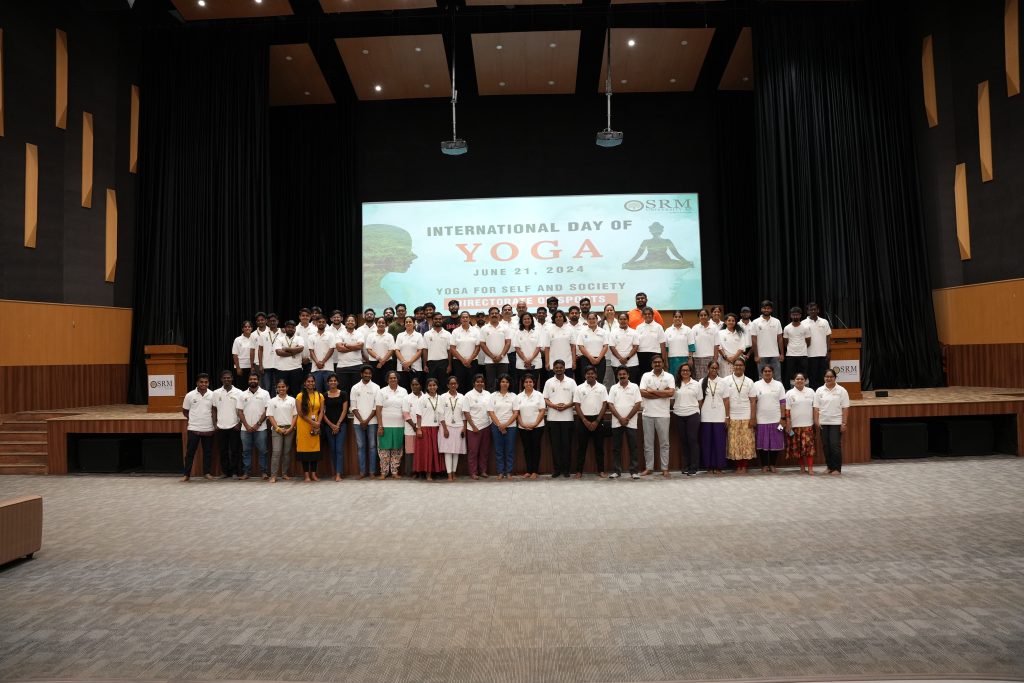
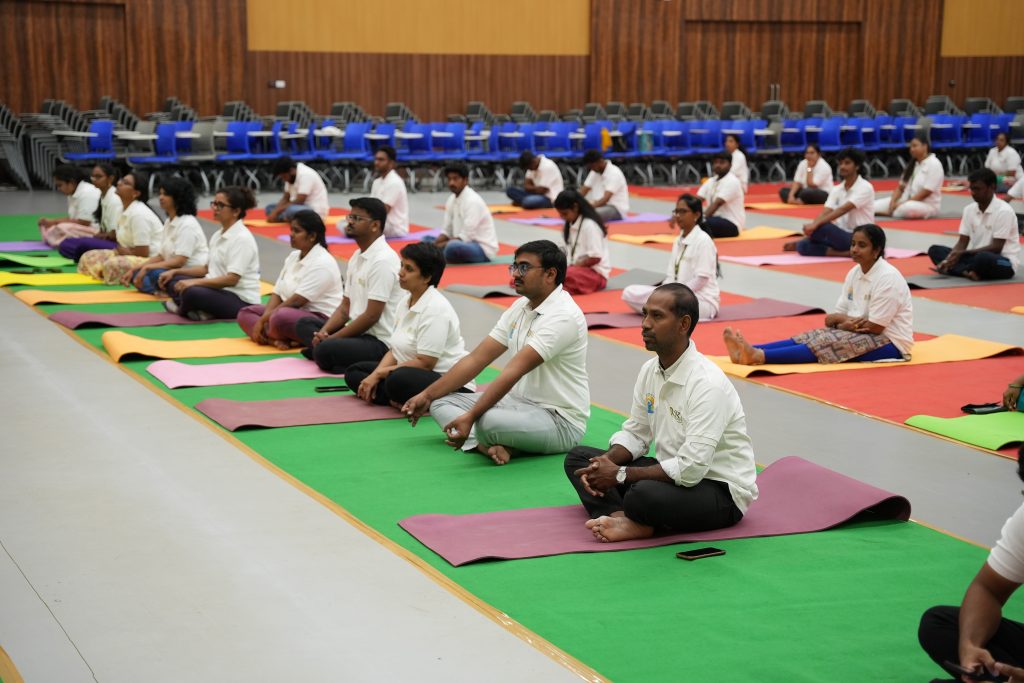
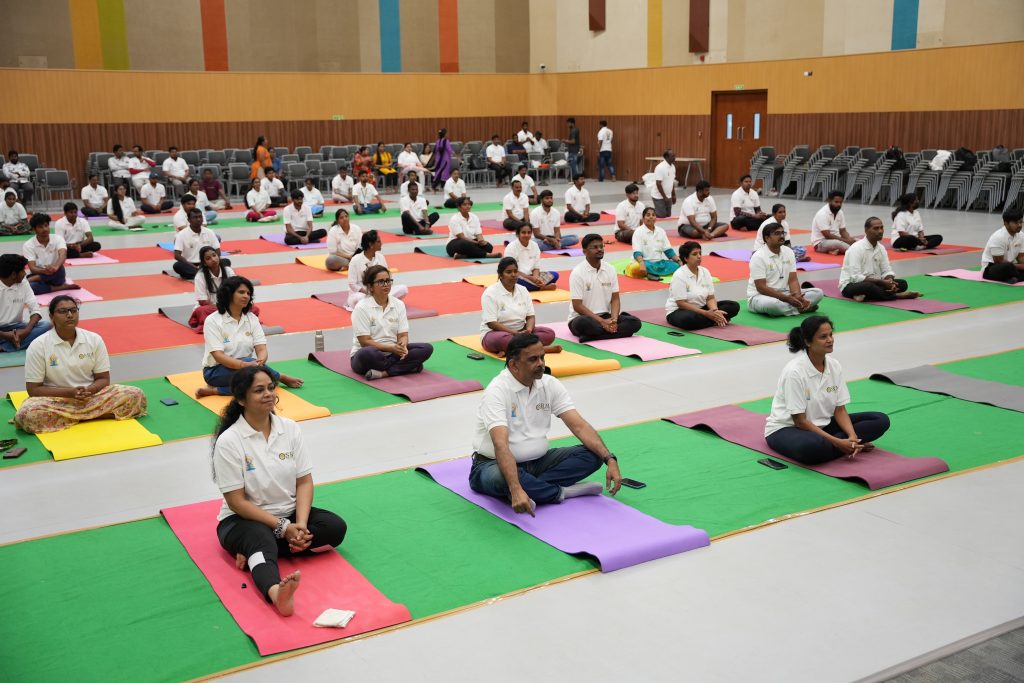
- Published in News, Sports News, student affairs news
Dr Chinmoy Das’s Groundbreaking Research Unveils Promising Discoveries
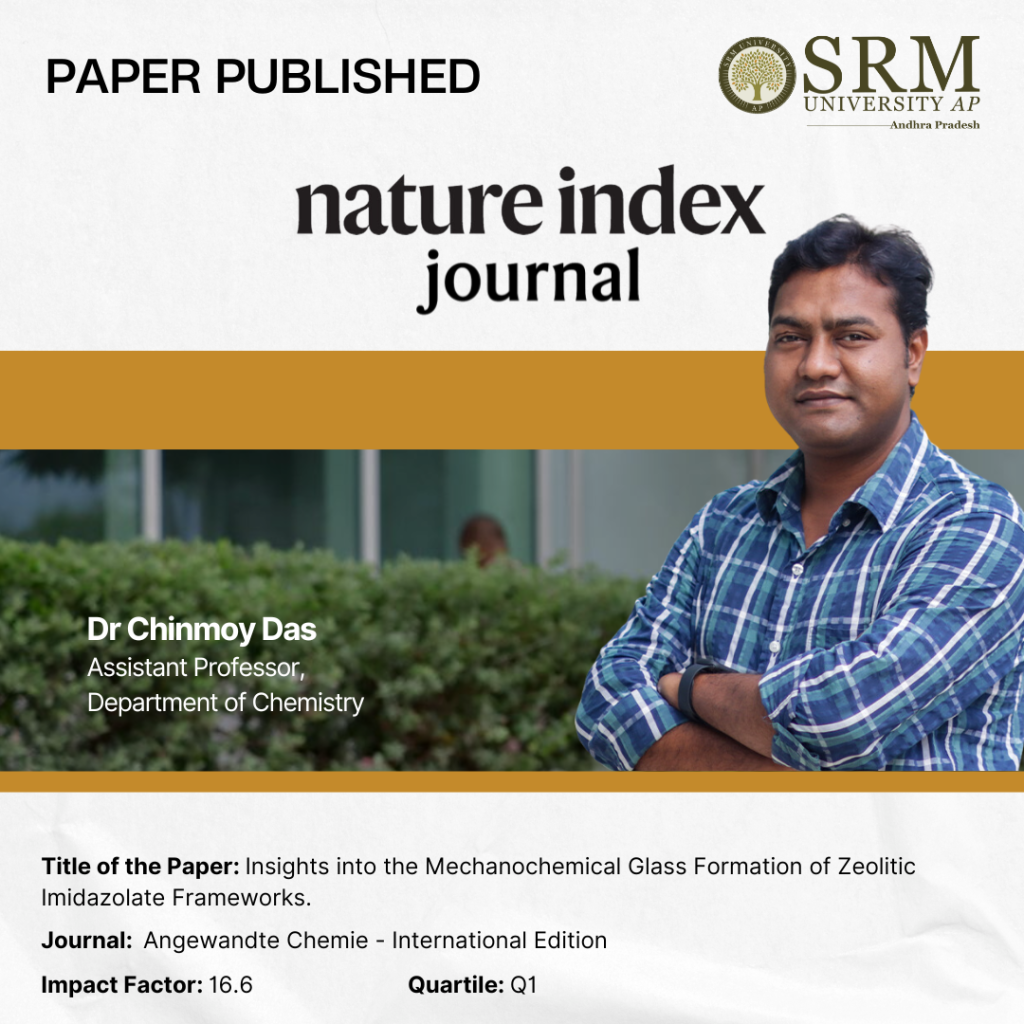
Dr Chinmoy Das, Assistant Professor at the Department of Chemistry at SRM University-AP, has made an impactful contribution with the publication of his research paper, “Insights into the Mechanochemical Glass Formation of Zeolitic Imidazolate Frameworks” in the prestigious Angewandte Chemie International Edition with an impact factor of 16.6. His paper unveils a rapid, eco-friendly, and efficient mechanochemical approach to transform glasses from their crystalline zeolitic imidazolate frameworks. This pioneering work opens new doors for sustainable and effective glass formation, showcasing the power of innovation in the field of chemistry.
Abstract:
We describe a rapid, ecofriendly, and efficient mechanochemical approach to transform glasses from their crystalline zeolitic imidazolate frameworks (ZIFs). We exposition mechanochemical technique through which the traditional melt-quench preparation of glassy phases can be replaced. In this study, we explore that Zn(II), Co(II), and Cu(II)- based crystalline ZIFs transformed into the glassy phases within five minutes through the mechanical ball milling technique. The appearance of glass transition temperature(T g ) upon mechanical milling of crystalline states demonstrated by different characterization techniques, such as X-ray powder diffraction (XRPD), differential scanning calorimetry (DSC), simultaneous thermogravimetric and differential thermal analyses (TG/DTA), scanning electron microscopy (SEM), X-ray total scattering and its deduced pair distribution functions (PDFs). We characterized the porosity and density of the glassy phases through CO 2 gas sorption techniques which aligned with the observation of thermal, structural, and textural features of the ZIFs after varying ball milling times beyond five minutes.
Practical implementation
We can prepare bulk ZIF glasses within five minutes of the mechanochemical approach that will guide the greater feasibility to produce the glass materials for industrial implications. In addition, the greater the accessibility of glassy materials, the greater the fabrication of glassy materials-based device fabrication.
Collaborations
This article has been published with the collaboration of Prof. Sebastian Henke (Henke Group), Department of Chemistry and Chemical Biology, TU Dortmund University, Dortmund, Germany.
Future Research Plans
Recently, we established our research group in SRM University-AP, and our group has started to explore an emergent research area of crystal-glass composite materials towards the applications of atmospheric water harvesting, solid-state electrolytes (Alkali and Alkaline metal ions-based), photovoltaics, and conversion of gaseous Carbon-dioxide molecules to industrially relevant liquids, such as methanol or ethanol.
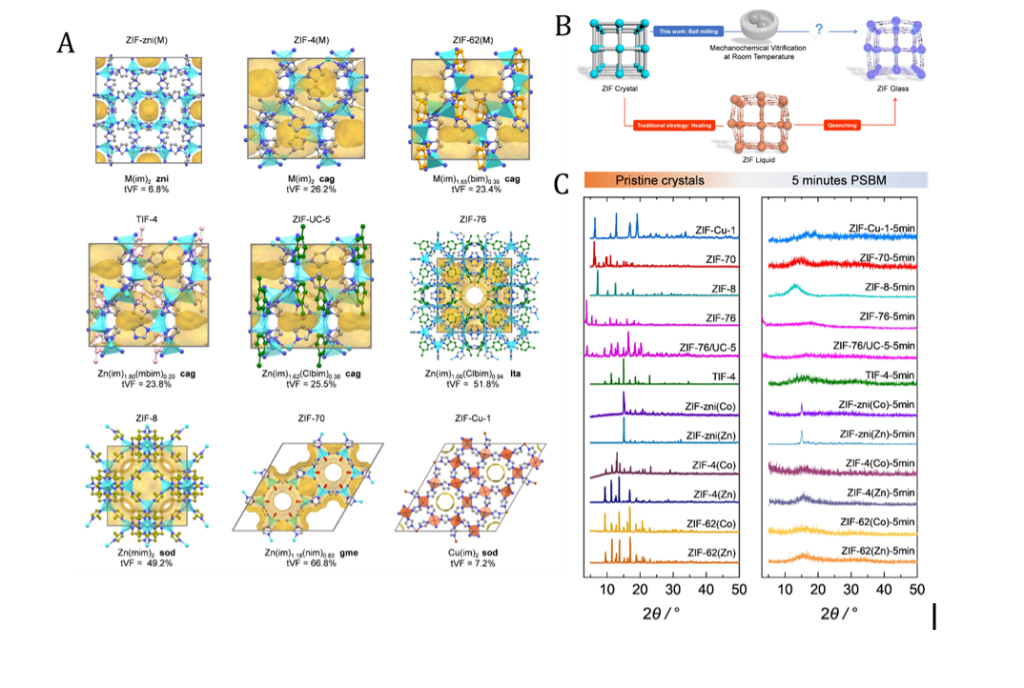
- Figure 1. (A) Single crystal structures of various ZIFs indicated in the figure. (B) Schematic representation of the traditional route to ZIF glass formation (red line) and the mechanochemical vitrification approach followed in this work (blue line). (C) PXRD patterns of the pristine ZIF polycrystalline materials and after five minutes of mechanical ball milling.
- Published in Chemistry-news, Departmental News, News, Research News
Unveiling the Dynamics of Labour Market Outcomes

In the wake of the COVID-19 pandemic, societies across the globe were pushed into acute constraints, especially in the absence of employment security and consistency. In this regard, Dr Boddu Srujana, Assistant Professor at the Department of Economics through her research paper titled, Women’s Labour Market Outcomes and Contours of Subnationalism: A Comparison Across Four States in India, scrutinises the impact of the pandemic on women’s employment and thereby explores whether these outcomes were uniformly impacted or if they reveal variations attributable to the political dynamics within these states.
Read the exciting excerpt followed by the link to the article, featured in Economic and Political Weekly
Abstract:
Using, the Periodic Labour Force Survey data for 2018–19 and 2020–21, the article explores shifts in women’s employment outcomes pre- and post-pandemic across four Indian states. The article finds that the states with stronger subnational politics fare better in creating quality employment outcomes for women compared to their counterparts, even during times of crisis such as the recent COVID pandemic. This stands true even for women with disadvantaged social, economic and educational backgrounds.
Practical implementation of research and social implications:
The research highlights the effectiveness of governance and emphasizes social policies over time that can create better job opportunities for women, where they can secure against vulnerabilities even during challenging times such as crises. This leads to greater economic independence, reduces poverty, and promotes social equity.
Collaborators:
The research paper is co-authored with Anagha Tobi and Sipoy Sarveswar.
Anagha Tobi is an Assistant Professor at the Department of Humanities and Social Sciences, Mahindra University, Hyderabad. Sipoy Sarveswar is an Assistant Professor at the Department of Anthropology, Vidya Bhavana, Visva-Bharati, Santiniketan.
Future Plans:
As part of her future research projects in this area, Dr Srujana plans on studying the urban informal labour markets, urbanisation, the dynamics of informalisation, the future of work, and the impact of public policy on labour markets. She is eager to extend her work in these areas by engaging in collaborative research while also partnering with academic institutions, policymakers and NGOs, whereby she aims to contribute to the changing world of work and develop actionable insights that can inform policy and practice
Link to the article.
https://www.epw.in/journal/2024/23/perspectives/womens-labour-market-outcomes-and-contours.html
- Published in Departmental News, Economics News, News, Research News
Teacher-Student Duo Collaborate to Achieve Scientific Excellence
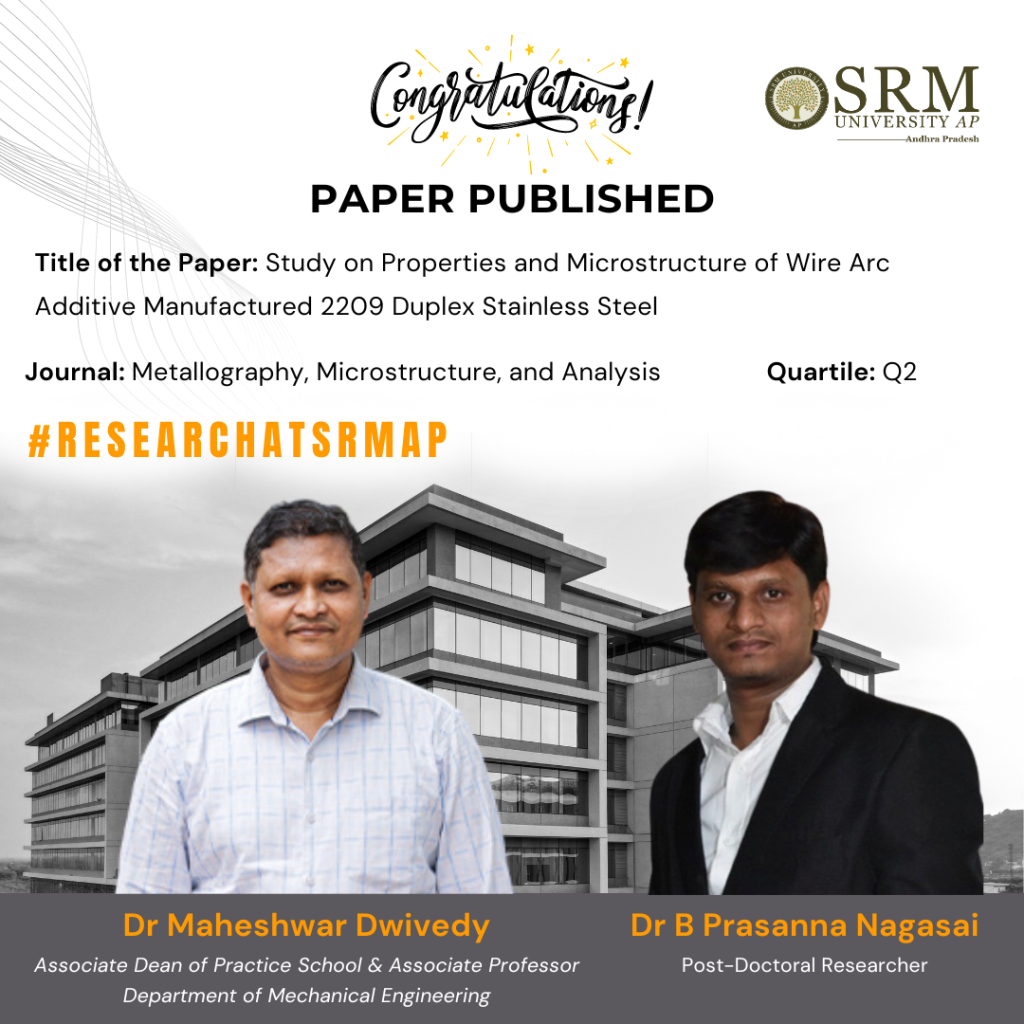
The Department of Mechanical Engineering at SRM University-AP is proud to present its research paper titled, Study on Properties and Microstructure of Wire Arc Additive Manufactured 2209 Duplex Stainless Steel by Dr Maheshwar Dwivedy and post-doctoral researcher, Dr B Prasanna Nagasai. Below is a brief write-up on their research.
Abstract:
This study investigates the properties and microstructure of 2209 duplex stainless steel (DSS) components fabricated using the wire arc additive manufacturing (WAAM) technique, specifically employing the gas metal arc welding (GMAW) process. The research focuses on the mechanical properties and microstructural characteristics of the produced cylindrical components. Detailed examination revealed that the microstructure varied from the bottom (region ①) to the top (region ②) of the cylinders, with hardness measurements ranging from 301 HV0.5 to 327 HV0.5, and impact toughness values from 118J to 154J. The tensile properties exhibited anisotropic behavior, with ultimate tensile strength and yield strength ranging from 750 to 790 MPa and 566 to 594 MPa, respectively. The study highlights the significant influence of complex heat cycles and cooling rates on the primary phase balance, resulting in a 50/50 austenite/ferrite distribution. Additionally, σ-phase precipitation was observed at the ferrite grain boundaries. The observed increase in austenite content from region ① to region ② is attributed to reduced cooling rates and extended time for solid-state phase transformation. This research provides valuable insights into optimizing the WAAM process for enhanced performance of 2209 DSS components.
Citation Format:
Prasanna Nagasai, B, Maheshwar Dwivedy, Malarvizhi, S. et al. Study on Properties and Microstructure of Wire Arc Additive Manufactured 2209 Duplex Stainless Steel. Metallogr. Microstruct. Anal. (2024). https://doi.org/10.1007/s13632-024-01089-8
Practical implementation:
The practical implementation of this research on Wire Arc Additive Manufacturing (WAAM) for Duplex Stainless Steel (DSS) has significant implications for industries requiring high-strength, corrosion-resistant components, such as construction, marine, and chemical processing. By optimizing the WAAM process to produce DSS parts with balanced microstructures, manufacturers can create durable and efficient parts more cost-effectively and with less material waste than traditional methods. This advancement could lead to more sustainable manufacturing practices, reducing the environmental impact and operational costs associated with producing large metal components. Socially, the widespread adoption of this technology could drive innovation, create new job opportunities in advanced manufacturing, and contribute to the development of stronger, longer-lasting infrastructure and machinery, ultimately benefiting the economy and society at large.
Collaborations:
Dr V Balasubramanian,
Professor & Director,
Centre for Materials Joining & Research (CEMAJOR)
Annamalai University, Annamalai Nagar-608002, Tamilnadu.
Dr P Snehalatha,
Associate Professor & Head
Department of Mechanical Engineering,
Sri Padmavathi Mahila Visvavidyalam, Tirupati, Andhra Pradesh-517502, India.
Future Research Plans:
In our upcoming work, we will focus on developing Functionally Graded Materials (FGMs) using Wire Arc Additive Manufacturing (WAAM), combining nickel and stainless steel. This research aims to harness the unique properties of each metal to create components tailored for specialized applications requiring high performance. Key challenges include optimizing material interfaces, refining deposition processes, and ensuring robust structural integrity throughout production.
The link to the article– https://doi.org/10.1007/s13632-024-01089-8
- Published in Departmental News, Mechanical Engineering NEWS, News, Research News

